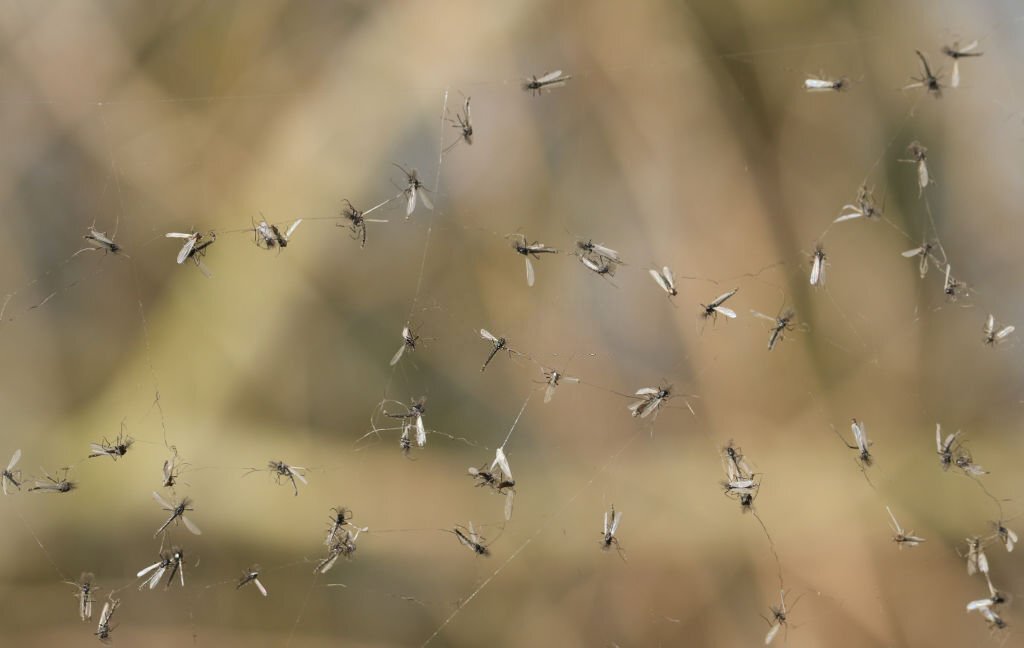Last Updated on April 15, 2024 by Real Men Sow
Lawn gnats (fungus gnats) often hover above the grass in large swarms. They thrive in moist soils and decaying plant materials. Their numbers increase during hot, wet weather. They are a nuisance but not a threat. They don’t bite, and they only eat liquids.
Although they occasionally feed on ornamentals and root hairs of grass, the larvae don’t usually cause much damage outside. There are many cultural, biological, and chemical methods that can be used to get rid of pests so that you can spend your outdoor time enjoying the outdoors.
Cultural Control Methods to Eliminate Lawn Gnats
To control lawn gnats, you must eliminate damp vegetation and water sources. Overwater landscape areas, and let the soil dry between irrigation sessions. It is important to remove any potential breeding areas, such as birdbaths, old tires, and animal dishes, and cover any unused rain barrels or pools. Keep mulch layers below 3 inches in thickness.
Bacterial Control Methods
Bacillus thuringiensis, subspecies Israelensis, is a soil-borne bacteria that kills larvae of various gnats and flies. It does not affect people, pets, or aquatic life. Bti causes the maggots to stop eating and become starved within a matter of days. Bti products are available in a variety of easy-to-use formulations such as ready-to-use dunks or pouches. Because instructions may vary, make sure to read and follow all directions.
One product suggests using one-quarter of a briquet per 1 to 5 feet of water surface. Slowly, the product releases the bacteria into the water. The Bti is effective for approximately 30 days. Give at least 30 days for repeat applications.
Other Biological Control Methods
Predaceous nematodes (Steinernema feltiae), can be used to spray your lawn. This will help keep the gnat larvae population under control. Follow the instructions on the label for mixing and applying. Mixing one package of nematodes with 2 gallons of water in a handheld sprayer is recommended by one product. Let the solution sit for 30 seconds before adding the water.
Spray the solution evenly across the treatment area. Keep shaking the sprayer to ensure that the nematodes don’t sink. If necessary, repeat applications every 2 to 3 weeks. The soil treated with nematodes should be kept moist for 14 days following application. Spray only in the mornings or evenings, as direct sunlight can kill nematodes.
Using Traditional Insecticides to Kill Lawn Gnats
There’s a broad-spectrum insecticide that you cannot use in your landscape. They can kill beneficial insects and gnats. A pyrethrin-based insecticide can provide temporary relief for severe infestations. These insecticides will only kill the pests upon direct contact and have no effect on the gnats that fly into the area after the spray has settled.
Pyrethroid-based insecticides are available in many formats, including ready-to-use sprays. Just shake the spray bottle and then thoroughly moisten the plants where the pests are resting. Use ready-to-use sprays at intervals of seven to ten days.
Considerations
Experts recommend that you only live with a small number of lawn gnats. Outdoors, and fungus gnats can be beneficial insects as they help to decompose plants, pollinate grasses, and release nutrients for other plants. Bt and other pyrethroid-based products are not toxic to humans but can cause irritation to your eyes. Protect your eyes with gloves, long sleeves, and protective eyewear. After handling products, wash your hands well. Keep any unopened product out of reach of pets and small children.

